Mars Methane Mystery: Hidden Microbes or Geology?

TL;DR: Thousands of Kuiper Belt objects beyond Neptune preserve 4.6-billion-year-old evidence of the solar system's formation, revealing that gentle accretion, not violent collisions, built our planetary system's distant worlds.
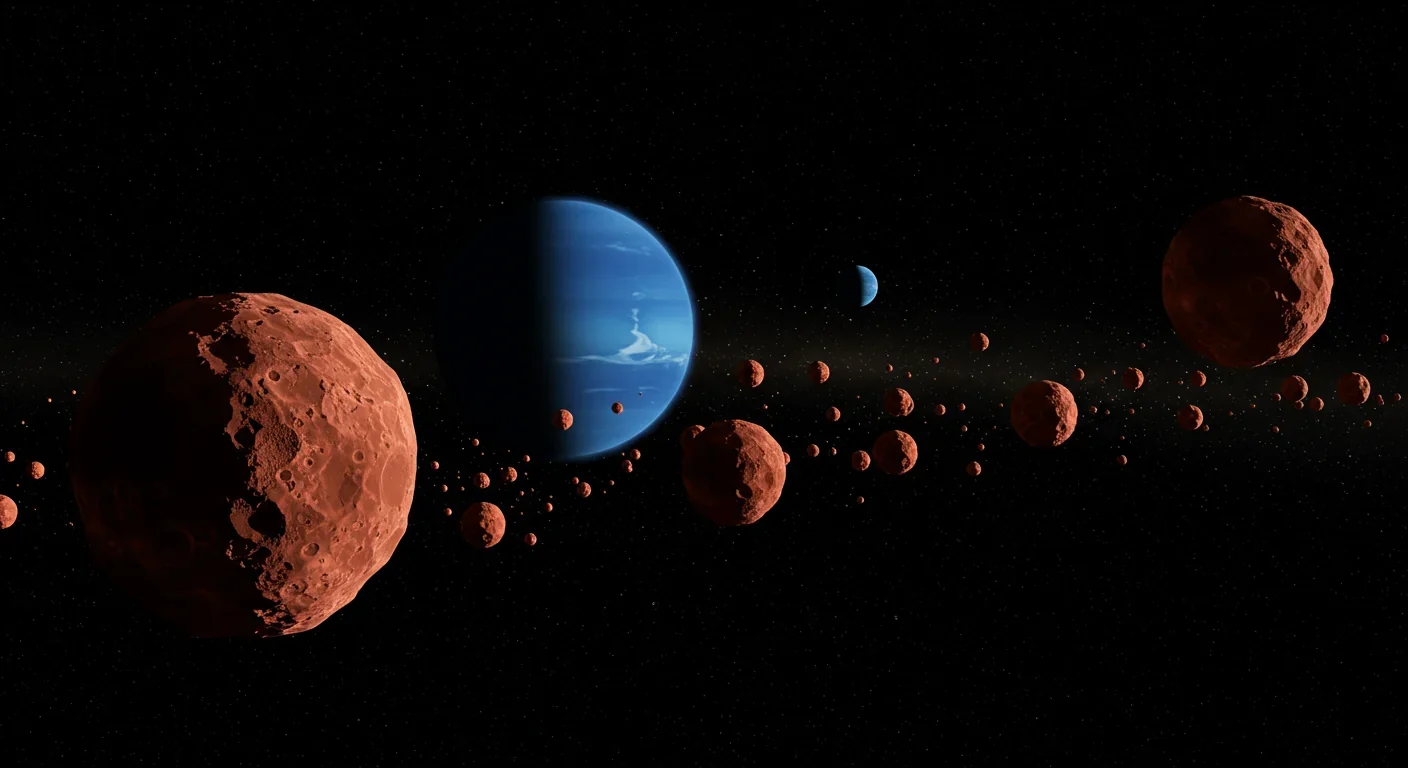
Beyond Neptune's orbit, billions of miles from Earth, lies a cosmic library that's been waiting 4.6 billion years for us to read it. The Kuiper Belt—a vast, doughnut-shaped region packed with hundreds of thousands of icy bodies—preserves evidence from the solar system's birth. Recent discoveries from NASA's New Horizons mission and cutting-edge telescope surveys are revealing that these frozen remnants aren't just ancient artifacts. They're actively rewriting what we thought we knew about how planets form.
For decades, astronomers treated the outer solar system like background noise. Then we started looking closer. What we found challenged everything.
The Kuiper Belt stretches from roughly 30 astronomical units (AU)—where Neptune's orbit ends—out to about 50 AU from the Sun. To put that in perspective, Earth sits 1 AU from the Sun, so we're talking about a region that begins 30 times farther out than we are. It's so far away that sunlight reaching these objects is faint, leaving them frozen at temperatures near absolute zero.
More than 2,000 trans-Neptunian objects have been catalogued, but that's just scratching the surface. Scientists estimate there are hundreds of thousands of objects larger than 60 miles across, and millions of smaller ones. This isn't a sparse asteroid belt—it's a graveyard of planetesimals, the building blocks that never quite made it to planet status.
The region contains familiar names like Pluto, demoted from planet to dwarf planet in 2006 but no less fascinating. It also harbors stranger worlds: Eris, Makemake, Haumea, and the bizarrely distant Sedna. Each one tells a different chapter of the same story about how our solar system came to be.
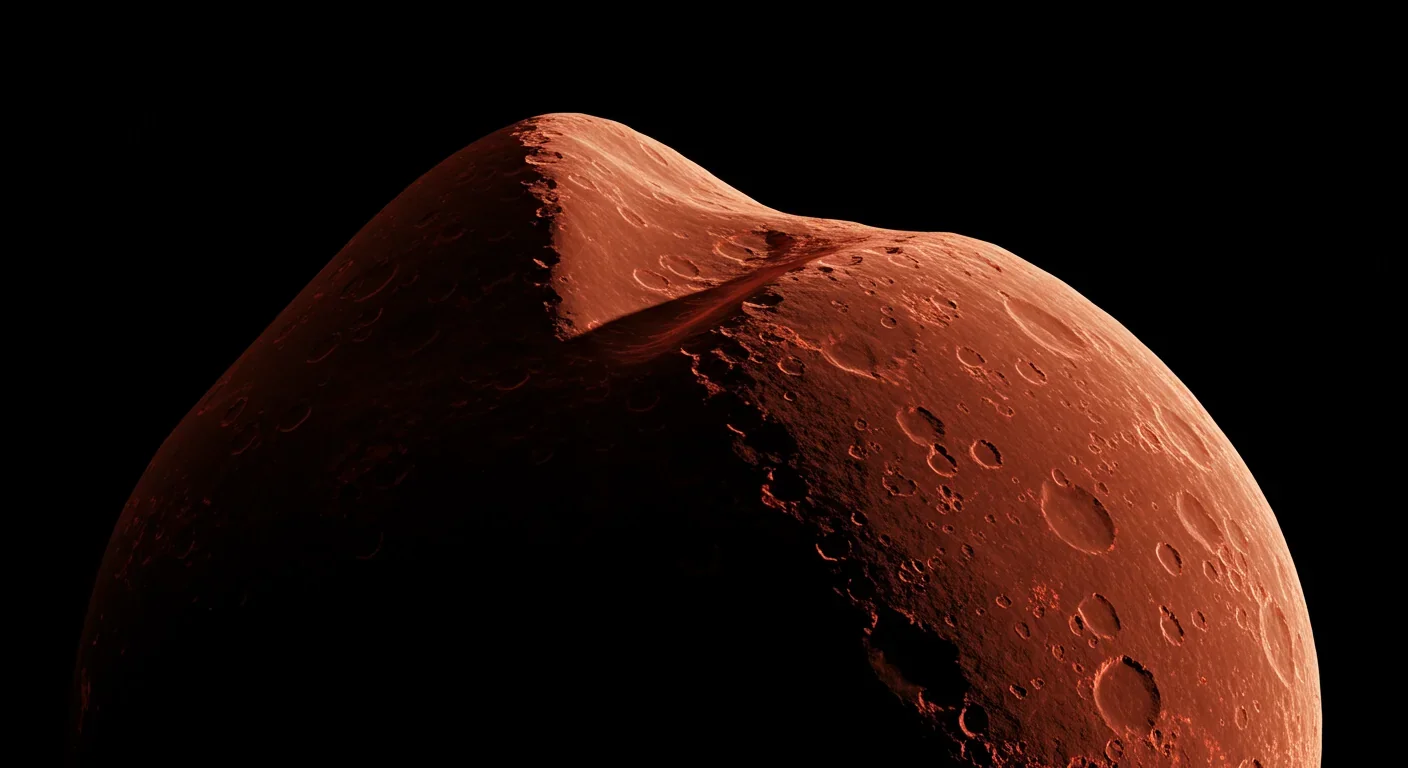
When NASA's New Horizons spacecraft flew past Pluto in July 2015, it sent back images that stunned planetary scientists. Instead of a dead, cratered iceball, Pluto revealed itself as a geologically active world with nitrogen ice plains, water ice mountains towering 11,000 feet high, and a complex atmosphere.
But the real revelation came on January 1, 2019, when New Horizons encountered Arrokoth (formerly known as 2014 MU69), a Kuiper Belt object that looked like two spheres gently fused together—"a partially flattened red snowman," as researchers described it. This wasn't violent collision debris. Arrokoth formed from two separate bodies that drifted together at walking speed and stuck.
Arrokoth's gentle merger contradicted prevailing theories that planets formed through violent, high-energy collisions. Instead, it suggested the early solar system was calmer than we'd imagined—objects assembled through slow accretion, not catastrophic smashups.
That gentle merger process contradicted prevailing theories that planets formed through violent, high-energy collisions. Arrokoth's pristine structure suggested the early solar system was calmer than we'd imagined, at least in the outer reaches. Objects assembled through slow accretion, not catastrophic smashups.
The spacecraft's observations revealed Arrokoth's reddish color comes from organic compounds called tholins, created when cosmic rays and ultraviolet light bombard simple ices. These tholins are essentially the same materials that give Pluto and other distant worlds their distinctive hues—chemical fossils from the solar system's infancy.
The Kuiper Belt isn't uniform. It contains distinct populations of objects, each with different orbits and histories that reveal how the outer solar system evolved.
Classical Kuiper Belt Objects represent the most pristine, undisturbed population. These cold classicals maintain nearly circular orbits with low inclinations, never venturing close to Neptune. They've remained essentially frozen in their original orbits for billions of years, making them the closest thing we have to a time capsule from the solar system's formation.
Resonant Objects include Pluto and thousands of other bodies locked in orbital resonances with Neptune. Pluto completes exactly two orbits for every three Neptune makes—a 3:2 resonance. Other objects sit in 1:1, 4:3, 2:1, and other resonances. These resonant relationships aren't coincidences. They're evidence that Neptune migrated outward early in solar system history, sweeping objects into gravitational lockstep as it moved.
Scattered Disk Objects have highly elliptical orbits that sometimes bring them close to Neptune before flinging them back out to enormous distances. These objects were violently perturbed by Neptune's gravity and scattered outward. Eris, one of the largest known dwarf planets, belongs to this population.
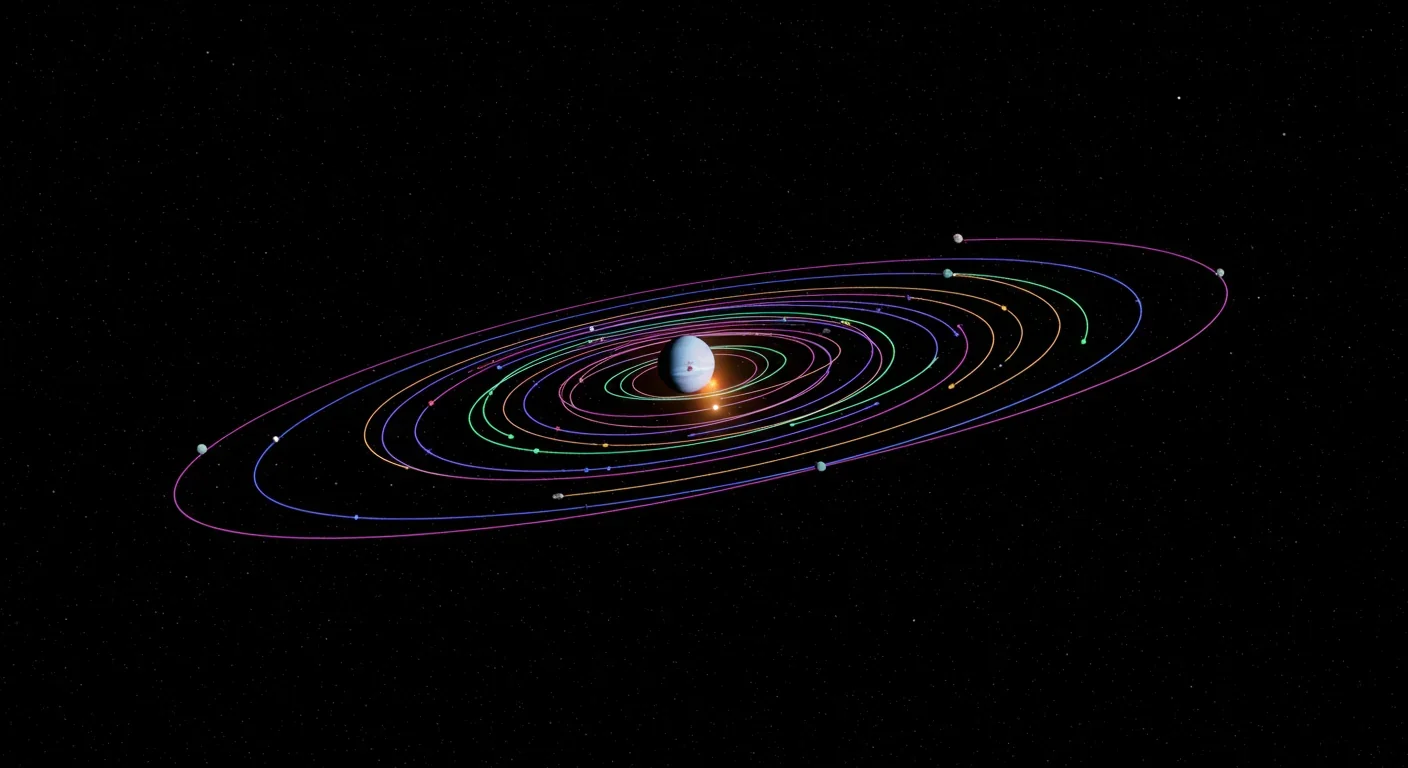
The existence of these three populations tells us that Neptune didn't form where it is now. Early in solar system history, gravitational interactions between Jupiter and Saturn pushed Uranus and Neptune outward. As Neptune migrated, it stirred the Kuiper Belt like a spoon through cosmic soup—scattering some objects, capturing others in resonances, and leaving the cold classical region relatively untouched.
Then there are the weirdos. A small group of objects called Sednoids orbit so far from the Sun that even Neptune's gravity can barely touch them. Sedna itself has a perihelion (closest approach to the Sun) of 76 AU and travels out to 937 AU at its most distant. Its orbit takes 11,400 years to complete.
In 2025, researchers announced the discovery of 2023 KQ14, nicknamed "Ammonite," a fourth Sednoid with a perihelion of 66 AU. Computer simulations show Ammonite's orbit has remained stable for at least 4.5 billion years—essentially unchanged since the solar system's formation.
Here's the puzzle: no known gravitational mechanism in the current solar system can explain how these objects got into such distant, stable orbits. Neptune can't reach them. Jupiter and Saturn are too far away. Something else must have been present in the early solar system—perhaps a temporary fifth giant planet that was later ejected, or a passing star that perturbed the outer disk, or even the hypothetical Planet Nine some researchers believe lurks in the distant outer solar system.
"The fact that 2023 KQ14's current orbit does not align with those of the other three sednoids lowers the likelihood of the Planet Nine hypothesis."
— Dr. Yukun Huang, National Astronomical Observatory of Japan
Interestingly, Ammonite's orbit doesn't align with the other three Sednoids. This misalignment actually reduces the likelihood that Planet Nine exists, because a single massive perturber should have created more uniform orbital clustering. Dr. Yukun Huang from Japan's National Astronomical Observatory noted that the diversity among Sednoid orbits "lowers the likelihood of the Planet Nine hypothesis."
So what sculpted these orbits? We genuinely don't know yet. The Sednoids remain one of the solar system's deepest mysteries.
Composition studies reveal that Kuiper Belt objects are basically dirty snowballs—but the "dirt" is fascinating. They contain water ice mixed with frozen methane, ammonia, nitrogen, and more complex organic molecules. Some objects show evidence of differentiation, where denser materials sank toward the center while lighter ices floated to the surface.
Recent observations from the James Webb Space Telescope have detected methane, carbon dioxide, and complex organic molecules on the surfaces of distant objects like Sedna, Gonggong, and Quaoar. Webb's infrared capabilities can identify specific chemical signatures that ground-based telescopes miss.
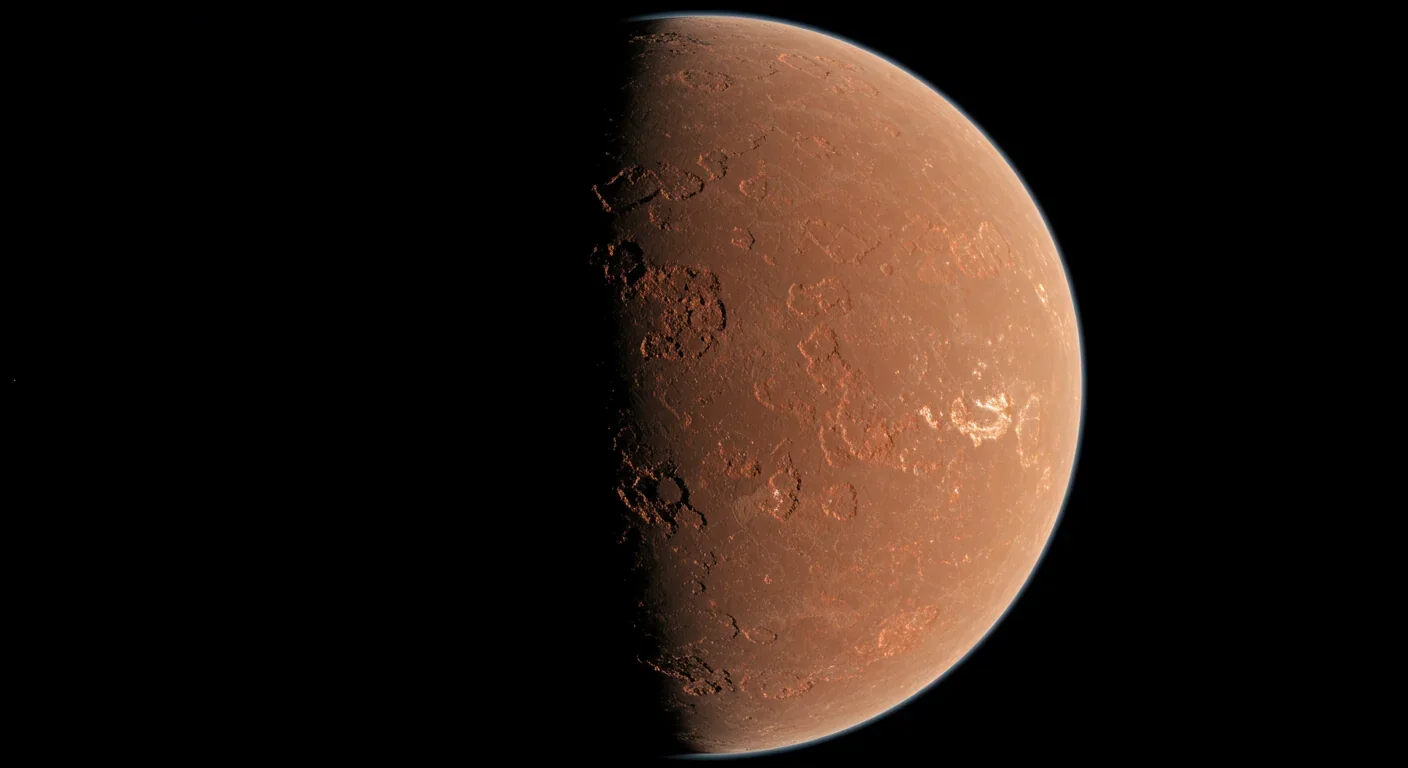
The surfaces of many KBOs appear reddened from billions of years of radiation exposure. Cosmic rays and solar ultraviolet light break down simple ices and methane molecules, creating complex organic compounds. These tholins coat the surfaces like ancient patinas on bronze statues—chemical records of eons spent in the cosmic deep freeze.
Some larger objects like Pluto and Eris have enough internal heat (from radioactive decay and tidal forces) to drive geological activity. Pluto's nitrogen ice plains resurface themselves through convection, erasing craters and creating polygonal patterns. Other objects remain completely inert, preserving their original cratering records.
One of the most surprising discoveries is how common binary systems are in the Kuiper Belt. Roughly 10-20% of classical KBOs have companion objects orbiting them, often similar in size to the primary body. Pluto's moon Charon is nearly half Pluto's diameter, making it more of a double planet system than a planet-moon pair.
These binaries probably formed through gentle collisions in the dense primordial disk. Computer simulations show that in a population of slowly tumbling, loosely bound objects, low-velocity collisions can result in capture rather than destruction. Two objects bump together at a few meters per second, merge partially, and end up orbiting their common center of mass.
The early Kuiper Belt originally contained 7-10 times Earth's mass worth of material. Most of that mass was ejected by Neptune's migration, leaving behind perhaps 1-10% of the original population.
The prevalence of binaries tells us something crucial: the early Kuiper Belt must have been much denser than it is today. Gentle capture requires objects to be close together. Current estimates suggest the Kuiper Belt originally contained 7-10 times Earth's mass worth of material. Most of that mass was ejected by Neptune's migration, leaving behind perhaps 1-10% of the original population.
This raises an interesting question: if most of the original Kuiper Belt is gone, where did it go? Some fell sunward, possibly delivering water and organic molecules to the inner planets during the Late Heavy Bombardment around 4 billion years ago. Others were flung outward into the Oort Cloud, a spherical shell of icy bodies extending halfway to the nearest star. Some were ejected from the solar system entirely.
Around 50 AU, the number of objects drops off sharply—a feature called the Kuiper Cliff. Beyond this boundary, the population density plummets to almost nothing (until you reach the scattered disk and Sednoid populations much farther out).
Why does this cliff exist? One hypothesis involves Neptune's migration. As the ice giant moved outward, it swept the inner Kuiper Belt clean while compressing objects into a narrower band. The migration eventually halted, leaving a relatively sharp outer edge.
Another possibility involves an undiscovered planet in the outer solar system. A massive body beyond 50 AU could have gravitationally cleared that region over billions of years. This is separate from the Planet Nine hypothesis—we're talking about potentially multiple unseen objects shaping the outer solar system's architecture.
The missing mass problem is real. Models of solar system formation predict the Kuiper Belt should be far more massive and extend much farther than observations show. Something removed most of the material. Whether that "something" was planetary migration, stellar flybys, or undiscovered planets remains an active area of research.
The Kuiper Belt is teaching us that planet formation is messier, more diverse, and more interesting than textbook models suggested. Every planetary system probably has its own version of a debris disk, shaped by the particular history of giant planet migration, stellar encounters, and random gravitational interactions.
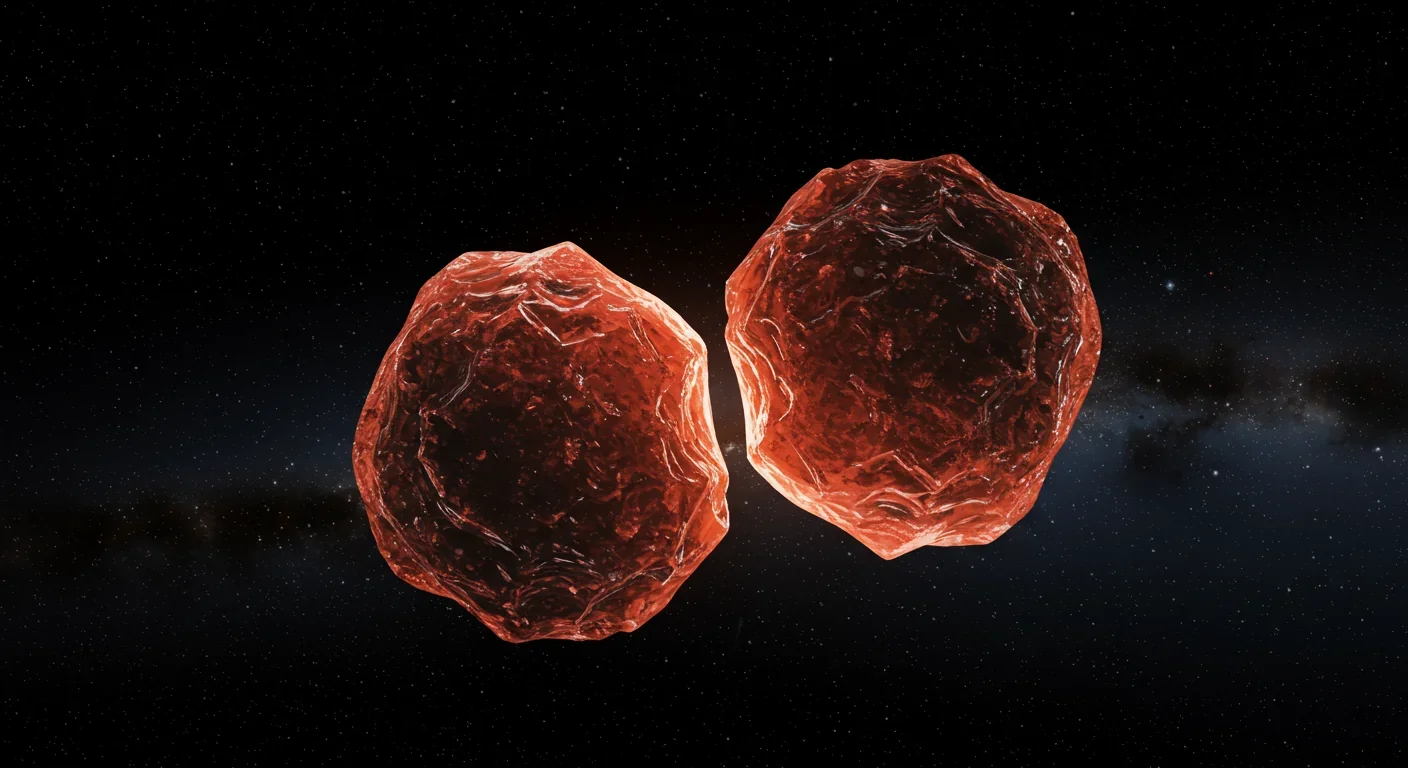
Observations of debris disks around other stars using the Atacama Large Millimeter Array (ALMA) show similar structures: rings, gaps, asymmetries, and clumps that hint at unseen planets. By understanding our Kuiper Belt in detail, astronomers can interpret what they see around distant stars.
The gentle formation process revealed by Arrokoth and binary KBOs suggests that planetesimal growth can proceed through hierarchical accretion—small particles stick together to form larger particles, which stick to form even larger ones, in a gradual process more like snowflakes accumulating than like boulders smashing together.
This has implications for how quickly planets can form. If collisions can be gentle and efficient, terrestrial planets might assemble faster than previously thought. Conversely, if most mass gets scattered or ejected before it can accumulate, planet formation becomes a delicate race against dynamical stirring.
Current surveys like the Outer Solar System Origins Survey (OSSOS) and the Dark Energy Survey have dramatically increased the number of known Kuiper Belt objects. Upcoming facilities like the Vera C. Rubin Observatory's Legacy Survey of Space and Time (LSST) will discover thousands more, providing statistical samples large enough to test formation models rigorously.
NASA's New Horizons continues its journey deeper into the Kuiper Belt, though it won't encounter another object unless mission planners identify a suitable target within fuel range. The spacecraft's instruments still function, collecting data on the space environment, cosmic dust, and distant KBOs it can observe from afar.
Future missions to the Kuiper Belt face enormous challenges. The region is so distant that even traveling at New Horizons' speed (about 31,000 mph), reaching 50 AU takes nearly a decade. Orbital missions that could study objects up close for extended periods would require entirely new propulsion technologies or multi-decade mission timelines.
Some researchers have proposed small, fast probes launched in swarms to study multiple objects, or using gravity assists from Jupiter and Saturn to boost spacecraft to higher speeds. Others envision placing a large telescope at the Sun's gravitational focus point (around 550 AU), where the Sun's gravity acts as a massive lens capable of imaging exoplanets and distant KBOs in unprecedented detail.
You might wonder why frozen rocks billions of miles away matter. Here's why: the Kuiper Belt is the only place we can study primordial planetary material up close. Meteorites give us samples of the inner solar system, but they've been cooked by the Sun's heat and battered by collisions. Kuiper Belt objects preserve volatile ices and organic molecules that would've evaporated closer to the Sun.
"The Kuiper Belt is truly a frontier in space – it's a place we're still just beginning to explore and our understanding is still evolving."
— NASA Science
Understanding these objects helps answer fundamental questions about our origins. Did Earth's water come from Kuiper Belt comets? The isotopic ratios don't quite match, suggesting water may have come from asteroids or a mix of sources. What about organic molecules—the building blocks of life? Tholins and complex carbon compounds definitely exist on KBOs, and some certainly fell to early Earth.
Every planetary system likely goes through similar evolutionary phases. By understanding the Kuiper Belt, we're learning what to look for around other stars, and what conditions might be necessary for planets like Earth to form and survive long enough for life to emerge.
The frozen archive beyond Neptune isn't just telling us about the past. It's showing us what's possible in planetary systems across the galaxy—and what might be waiting in the distant reaches of our own solar system, still undiscovered after 4.6 billion years.
The story the Kuiper Belt tells is ultimately a story about us. The same processes that shaped those distant icy worlds also shaped Earth. The same materials that compose Kuiper Belt objects fell to the early Earth, possibly delivering water and organics essential for life.
When we study Pluto's nitrogen glaciers or Arrokoth's binary lobes or Sedna's inexplicable orbit, we're not just satisfying curiosity. We're piecing together our own origin story—how a disk of gas and dust transformed into planets, moons, asteroids, comets, and eventually life.
That frozen archive beyond Neptune has been waiting billions of years for us to develop the technology and insight to read it. Now that we can, every discovery rewrites another chapter. And the most exciting chapters are probably still ahead, waiting in the darkness at the solar system's edge, preserved in ice, ready to reveal secrets we haven't even thought to ask about yet.

Curiosity rover detects mysterious methane spikes on Mars that vanish within hours, defying atmospheric models. Scientists debate whether the source is hidden microbial life or geological processes, while new research reveals UV-activated dust rapidly destroys the gas.

CMA is a selective cellular cleanup system that targets damaged proteins for degradation. As we age, CMA declines—leading to toxic protein accumulation and neurodegeneration. Scientists are developing therapies to restore CMA function and potentially prevent brain diseases.

Intercropping boosts farm yields by 20-50% by growing multiple crops together, using complementary resource use, nitrogen fixation, and pest suppression to build resilience against climate shocks while reducing costs.

The Baader-Meinhof phenomenon explains why newly learned information suddenly seems everywhere. This frequency illusion results from selective attention and confirmation bias—adaptive evolutionary mechanisms now amplified by social media algorithms.

Plants and soil microbes form powerful partnerships that can clean contaminated soil at a fraction of traditional costs. These phytoremediation networks use biological processes to extract, degrade, or stabilize toxic pollutants, offering a sustainable alternative to excavation for brownfields and agricultural land.

Renters pay mortgage-equivalent amounts but build zero wealth, creating a 40x wealth gap with homeowners. Institutional investors have transformed housing into a wealth extraction mechanism where working families transfer $720,000+ over 30 years while property owners accumulate equity and generational wealth.

AlphaGo revolutionized AI by defeating world champion Lee Sedol through reinforcement learning and neural networks. Its successor, AlphaGo Zero, learned purely through self-play, discovering strategies superior to millennia of human knowledge—opening new frontiers in AI applications across healthcare, robotics, and optimization.